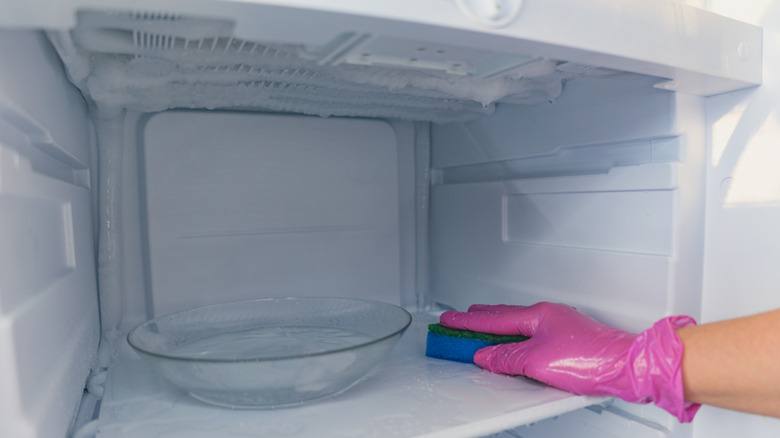Stop Putting It Off — It's Time To Defrost Your Freezer
Defrosting your freezer is not exactly the most thrilling kitchen task. It's messy, time-consuming, and the kind of chore we all pretend doesn't exist until a precious pint of homemade chicken stock has gone missing. But if you care about food quality, energy efficiency, and preventing food waste, defrosting your freezer is essential, especially for home cooks who treat their freezer as more than just a graveyard for forgotten frozen bulk food.
A frosty build-up isn't just annoying. Ice accumulation reduces the efficiency of your freezer, forcing it to work harder and burn more energy. It also steals precious space, which means less room for frozen peas or leftover wedding cake slices — and we simply cannot have that.
A frost-clogged freezer can also affect temperature consistency, meaning your carefully vacuum-sealed wild salmon could suffer from freezer burn. Even top-quality food can degrade quickly when the freezer isn't functioning properly. Regular defrosting helps your freezer run smoothly and last longer. Think of it as a little tune-up for what is arguably one of the most important appliances in your home.
Some preventative maintenance now will save you from an expensive replacement later. If you've got an old-school manual defroster or a chest freezer in the garage, these need defrosting about once or twice a year, or whenever the ice buildup is around 1/4 inch thick. Most modern freezers have automatic defrost systems, but if you ever need to move a freezer, you'll have to deal with defrosting manually.
Best practices for defrosting
Choose a cool day for defrosting, preferably when your freezer is a bit emptier. If you can, plan it right before a big grocery haul. Empty the freezer and transfer items to a cooler or insulated bag (note to readers in colder climates: If it's a winter month, experts recommend you do not store food in the snow). Be ruthless with anything icy, unlabeled, or old enough to vote.
Prepare for water drainage by placing towels at the base, open the door, and let the ice melt naturally. If you're impatient, use a pot of hot water placed inside the freezer. Once defrosted, clean the interior with warm water and vinegar or baking soda, and then dry thoroughly to prevent instant re-freezing. Once you're plugged back in and the temperature returns to a safe level (around 0°F), reload thoughtfully.
Label and date everything. Future you will be grateful that you can tell the duck fat from the roasted bone broth. Use bins or baskets to corral similar items like soups, meats, and sauces. It's never a bad idea to invest in a freezer thermometer to keep an eye on performance. And try to practice good freezer etiquette moving forward: Remember to never put hot food in the freezer and always seal, label, and date your items to protect them from freezer burn. Defrosting your freezer isn't just adulting — it's also good kitchen stewardship. A well-maintained freezer means less waste, better-tasting food, and more room for ice cream.

